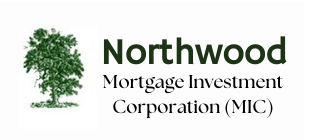A mortgage is a large responsibility for any homeowner to take on, and making regular, full payments is important in order to avoid things like foreclosure, bankruptcy, or high-interest rates, which can quickly accumulate.
Thankfully, if you’re experiencing difficulty regularly making payments, or if you’re simply looking for a way to pay less and save money, then there are many things you can do to reduce your mortgage rate.
Today, we’ll explore 5 factors you can explore to help lower your mortgage expenses and save more. Let’s begin.
1. Understand inflation
Inflation is simply the gradual increase in prices for goods and services, commodities, and housing, which reflects the economy’s current state. Inflation is one of the key factors in high mortgage rates, as the greater the inflation, the higher interest rates will be to combat the erosion of the dollar’s value.
In layman’s terms, inflation devalues money, so lenders and businesses need to charge higher prices and interest rates in order to get the same amount of value from their transactions.
2. Economic growth rates
There are a number of economic factors that also determine mortgage rates. For example, gross domestic product (or GDP), employment rates, and prospective economic and realty growth in the area all influence your mortgage rates.
One paradox is that when the economies slow, wages decrease, and jobs are scarce; mortgage rates are then often much lower. This is because there is less demand for homes, which means lenders have more spare gross capital at their disposal.
3. The Bank of Canada
The monetary policy governed by the Bank of Canada (BOC) influences economic activity, interest rates, and by extension, mortgage rates. While the BOC does not set specific interest rates, they set the industry-wide benchmark for interest rates.
The BOC has a significant influence on the interest rates banks and other financial lenders charge to the public, as well as general economic inflation. Understanding how the BOC functions on a basic level and understanding its large-scale influence is valuable for navigating your finances knowledgeably, especially if you have a variable mortgage rate.
4. Market conditions of housing
As trends and conditions of the overall housing market fluctuate, so too do mortgage rates. For example, as fewer homes are built or resold, there is a marked decline in the demand for mortgages and, thus, mortgage rates. An instance of this would be the phenomenon of renting, which causes mortgage rates to decline due to the lack of interest in the overall housing market.
5. Supply and demand
Supply and demand is ultimately the bottom line here. Housing is one of the few markets that one can accurately time. However, by paying attention to the overall ebb and flow of the industry, it can give you insights that help you get a cheaper mortgage, with a cheaper overall interest rate.
If you’d like to explore your own mortgage rate, lower your existing rate, or simply consult an expert about low mortgage rates you can get in the Toronto area, then reach out to Northwood Mortgage. We provide free insurance consultations for all our clients and look forward to meeting your housing needs. You can call us at 888-495-4825, or contact us online here.






































